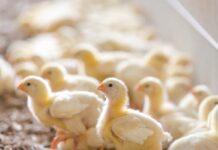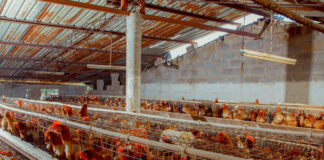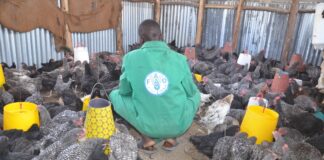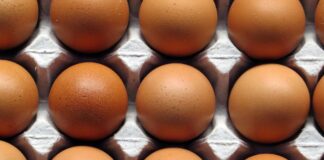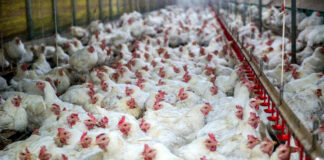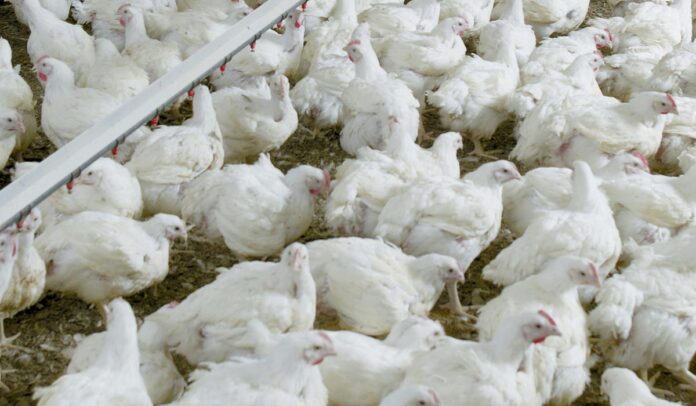
Antibiotic use once became a conventional, on-farm practice to prevent health issues and boost growth in poultry. Yet, public health concerns about rising bacteria resistance worldwide support the looming prohibition of the use of antibiotics for non-treatment purposes. However, even though majority agrees with lowering the elevated use of antibiotics, there are worries regarding its possible side effects on productivity decay.
What is the beef about?
Firstly, the main idea is to quit the misuse of antibiotics in food animals instead of denying treatment. In other words, sick chickens must be treated with antibiotics if pathogenic bacteria are present in the flock (i.e., therapeutic use). Following recommendations from a local veterinarian, infections should be treated with antibiotics, at the right dose and for a specific period, to kill specifically the pathogenic bacteria. Therefore, limiting antibiotic overuse in livestock shall not be seen as lack of treatment to sick animals when needed. But antibiotics have been misused as feed additives to 1) prevent infections and 2) support growth rate. Both together improve production efficiency, as chickens grow fast in a short time at similar feed intake, and reduce mortality in unhealthy, dirty conditions. On top of these non-therapeutic benefits, easy access to antibiotics at a low cost also popularized the use of antibiotic as growth promoters to raise profitability.
Research in the early 00s spotted antibiotic resistance in pathogenic bacteria of humans and animals linked with non-therapeutic use of these medicaments. Under therapeutic treatment, antibiotic dose is lethal to the target pathogen. However, when used as growth promoters, antibiotics are given at a low dose, for a long time, and to many animals (i.e., sub-therapeutic conditions). All together creates the best setup for resistance selection against antibiotics, and bacteria can build up tolerance that spreads rapidly within microbial communities. Also, in large flocks at high stocking densities, the odds of resistant strains go up so is their proliferation among animals. This rise and spread of antibiotic-resistant bacteria in animal and human populations imposes a clear threat to health safety because of 1) quick proliferation of resistant, pathogenic bacteria (e.g., foodborne diseases like Salmonellosis) and 2) loss of antibiotic effectiveness.
Moreover, and regardless its purpose, application of antibiotics in broilers and laying hens brings up further inquiries about food safety as waste residues can wash out into poultry products. Indeed, proper washout periods must guarantee drug withdrawal before processing to prevent medicament residues from entry into the food chain. Due to public health and food safety concerns, the worldwide need to restrict non-therapeutic use of antibiotics is consequently pushing poultry industry to ideally produce antibiotic-free, although raising chickens under this scenario can be challenging.
What to do next?
Going antibiotic free can be a struggle for producers reliant on antibiotics to prevent diseases. Then, working together with a veterinarian to develop solid biosecurity practices, implement them on-site, and elaborate a vaccination plan against local health problems is the first step to address this difficult task. Beside developing thorough biosecurity practices and an adequate vaccination plan, operating accordingly and confirming that the proposed action plan works on-site at keeping diseases away are equally important. For example, understanding how biosecurity practices are useful to avoid pathogens entry can help assess potential risks and prevent unforeseen breaches in husbandry or management. Overall, improvements in husbandry cleanliness and health management are leading measures to stop dependence on antibiotics for disease prevention in poultry barns.
Additionally, a well-developed immune system is bird´s first aid against any possible pathogen. Birds with naïve, immature immune system are greatly exposed in case of pathogen exposure and can develop health problems easily. For this reason, seeking opportunities to boost their immune response enhance their odds to overcome quickly potential threats to their health. Strategies that help strengthen their immune system include properly-timed vaccinations throughout rearing and lay, provision of probiotics early on to help stablish healthy microbiota in the digestive tract, and supplementation with immunostimulants. Vaccination plan and probiotics inclusion are relatively well-known, while immunostimulants yet got less attention. These feed additives incorporate antimicrobial peptides and/or pieces of bacteria or yeast that trigger a positive immunological response and improve preparedness in case of breach. All these approaches help birds train their immune response and build up a robust defense barrier to respond more effectively and stay better protected against potential pathogens if biosecurity fails. Another important aspect to keep in mind when reducing antibiotic use or transitioning toward antibiotic-free production is the breed of choice. Highly productive layers or fast-growing broilers may be less resilient against local diseases than more traditional or heritage lines since the latter appear more robust to challenging conditions. Therefore, if disease prevention is tough for whatever reason, switching to more robust and resilient breeds of chickens to local conditions may work practically the best in addition to previous recommendations.
Since antibiotics have also been widely used to attaint high body weight gain, replacing them for other growth promoters will also support their growth rate under antibiotic-free conditions. Since poultry cannot fully digest all their feed ration (particularly at younger ages), feed additives that exploits their ability to digest leftover nutrients can support feed efficiency. To achieve this goal, dietary supplementation with probiotics, acidifiers, and enzymes are verified solutions. Indeed, beside solid health management practices in-place, probiotics and organic acids can also aid in preventing disease separately. Due to their availability to drop pH, organic acids enhance protein digestibility and kill bacteria and fungi as pH falls below their survival threshold. Probiotics help develop a healthy intestinal microbiota that can digest non-digestible elements into nourishment and outcompete unhealthy bacteria. Also, enzymes are components that break down specific non-digestible or harmful dietary elements into molecules that poultry intestines can uptake. Still, the efficacy of enzyme supplementation greatly relies on feed ingredients like beta-mannanase for soybean meals. Although these three tactics are suitable solutions to improve performance outcomes when limiting antibiotic usage on-farm, solutions should be carefully evaluated explicitly for each case to maximize outcomes.
Reducing the non-therapeutic use of antibiotics can be challenging, and solutions to outweigh their potential disadvantages at no economic cost are needed. To achieve this goal, alternative growth promoters, a robust health plan, and strong biosecurity protocols are the best allies to support production efficiency, mitigate bacterial resistance, and reduce undesirable antibiotic residues in poultry products. The effectiveness of these strategies certainly leads on developing a healthy microbiota, refining digestion, improving the immune response, and preventing diseases entry. All of these are suitable steps to safeguard poultry health, welfare, and performance while cutting down on antibiotic use. Nonetheless, from a practical standpoint, identifying which strategy is likely to have the largest impact on production outcomes, due to peculiarities in management and husbandry, can help overcome quickly potential side effects (if any) of lowering antibiotic use on-farm.




